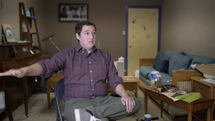

Before We Drowned
Before We Drowned is a raw and urgent documentary that exposes the environmental and public health crisis unfolding in the Rio Grande Valley — one of the most underserved and over-polluted regions in the United States.
Told through firsthand accounts, scientific evidence, and unfiltered data, the film investigates toxic water systems, decades of infrastructure failure, and the alarming rise in cancer, birth defects, and chronic illnesses among residents. It also issues a stark warning: the Valley is overdue for another Hurricane Beulah-level disaster — and current flood protections aren’t ready.
From unregulated flood zones to contaminated drinking water, Before We Drowned connects the dots between environmental neglect and human suffering — and asks: how much longer will the RGV be left to drown?
This is not just a story about pollution. It’s about silence, survival, and the fight for the most basic human right: the right to live in a safe, healthy environment.
What Most People Don’t Understand About the Rio Grande Valley
The Rio Grande Valley isn’t facing one pollution crisis — it’s facing many, all at once.
Every time it floods here, water systems like the Arroyo Colorado — a 90-mile stretch running from Mission to the Laguna Madre — overflow and contaminate neighborhoods with banned pesticides and cancer-causing chemicals. This waterway has long been listed as impaired, but it still flows directly through communities.
The region already suffers from some of the highest rates of cervical cancer, respiratory illness, asthma in children, and rare cancers that aren’t commonly found elsewhere. Layer that with undrinkable tap water across nearly every city, poor air quality, and the growing threat of industrial expansion — including SpaceX and two LNG terminals — and the danger becomes impossible to ignore.
What’s more, over 82,000 homes and more than 300 schools, hospitals, and critical facilities sit directly in the federally designated RGV floodplain. Every flood event pushes sewage, toxic runoff, and chemical waste into neighborhoods, classrooms, and businesses — creating a cycle of exposure that puts the entire population at risk.
This is a public health disaster unfolding in slow motion. And most of the RGV has no idea it’s happening.
Timeline of Agriculture, Pollution & Public Health in the RGV
1900s–1950s
Industrialized Agriculture Expands
-
Irrigation systems transform the RGV into a major produce region.
-
Heavy use of pesticides begins — including now-banned substances like DDT, toxaphene, and chlordane.
1960s–1980s
Growth with Toxic Trade-Offs
-
Chemical fertilizers and pesticides used at industrial scale.
-
Agricultural runoff contributes to pollution in waterways like the Arroyo Colorado and Rio Grande.
-
Colonias begin forming — informal settlements lacking basic infrastructure like sewage and clean water.
1991–1992
Brownsville Anencephaly Cluster
-
A spike in babies born without parts of their brains (anencephaly) alarms public health officials.
-
CDC confirms birth defect rates 3x the national average.
-
Suspected links to environmental exposure, possibly from pesticide runoff or air pollution, remain unresolved.
2002–2010s
Arroyo Colorado Impairment & EPA Monitoring
-
The Arroyo Colorado is listed as an “impaired waterway” due to high levels of bacteria and legacy pollutants.
-
Fish tissue shows elevated PCBs, mercury, and organochlorine pesticides.
-
TCEQ and EPA documents show public health concerns around irrigation canals and drainage ditches.
2018
UT Austin Study Highlights Flood Risk & Infrastructure Failure
-
Academic study confirms that wastewater plants in Cameron County discharge partially treated sewage into rivers during floods.
-
Report warns of increased flood-driven chemical exposure in colonias and vulnerable communities.
2023
PFAS Confirmed in RGV Waters
-
Texas A&M & TWRI publish first scientific study of PFAS in the Arroyo Colorado.
-
29 out of 30 samples — including drinking water — contain PFAS, or “forever chemicals,” linked to cancer, hormonal disruption, and immune damage.
March 27, 2025
Historic Flood Hits the RGV
-
Massive rainfall causes the Arroyo Colorado, irrigation canals, and sewage systems to overflow.
-
Floodwaters inundate colonias, schools, and businesses — mixing with industrial waste, agricultural runoff, and sewage.
-
Major calls for public health response go unanswered.








